| 1 | Found exclusively on Puerto Rico |
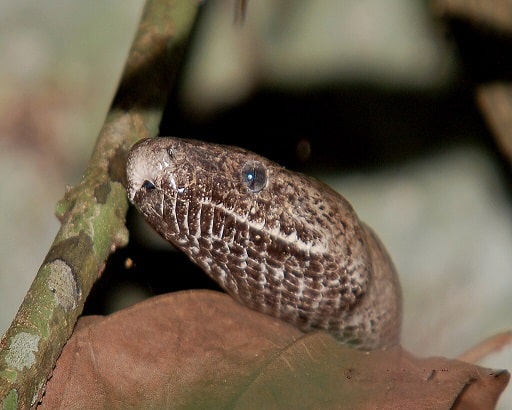
On Puerto Rico, the giant snake you have the best chance of stumbling into is the Puerto Rican boa (Chilabothrus inornatus). This species is shorter than its Cuban and Jamaican boa cousins, yet still respectable, averaging at 1.2 to 1.8 metres.
Many strange beliefs surround this snake. They were one of the originators of snake oil, the modern day byword for medical scam. As early as the 1700s, Puerto Rican boas were being harvested for their special medicinal powers, particularly for aching joints. Even today, villagers sneak into local caves to raid the snake colonies, to use the fat as an aphrodisiac. Other villagers kill them on sight, as they’re said to belong to the forces of evil.
Chilabothrus inornatus are particularly common in Puerto Rico’s karst region, which covers 1462km² of the island’s northwest. This is a rugged landscape of limestone rock and mature forest, abundant freshwater supplies, and wild formations of rock jutting up known as mogotes or haystack hills. Caves are plentiful here, hidden in forested valleys, and many are littered with Puerto Rican boas. Puerto Rican boas are generally solitary, but up to 50 can live in one cave, sucked in from the surrounding forests like a tractor beam. The reason is bats, which they’re unusually skilful at hunting.
| 2 | Plain colours, but subtle patterns |
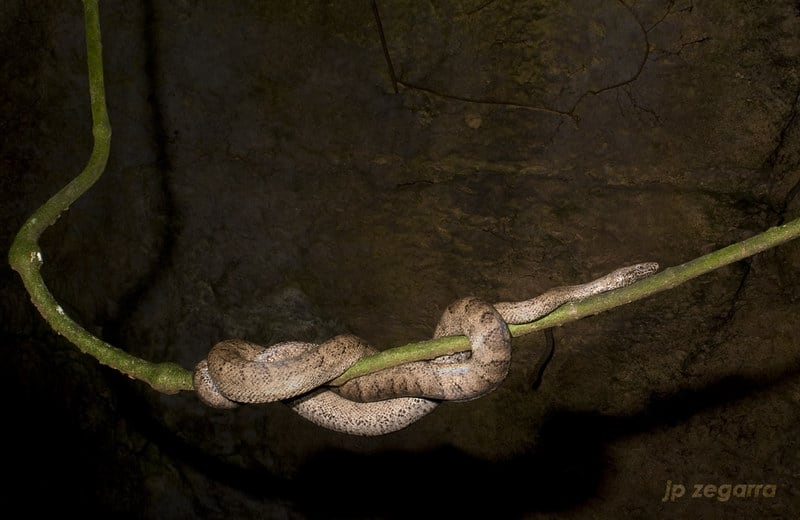
From a distance, Puerto Rican boas look much duller than their Caribbean boa neighbours. Their Latin name, Chilabothrus inornatus references the lack of patterns. But up close, their grey scales develop shimmering tones and white patches which are hard to spot from a distance. Jamaican boas are also forest dwelling, yet have a strongly yellow tone. It’s a mystery as to why one became grey and the other much brighter, but the Puerto Rican boa’s love of caves may be involved, being a possible camouflage against the rocky walls to stay hidden from bats.
This species is most closely related to the Mona Boa and Virgin Islands boas, having diverged 10.5 million years ago. They’re estimated to have diverged from Cuban boas (the most ancient Caribbean boa) 15.3 MYA. Puerto Rican boas are commonly encountered while basking in the sun, mostly on the first sunny day after several days of cool rains.
Although the Puerto Rican boa’s population plummeted over the 19th century, primarily due to deforestation, it still inhabits 62 out of the island’s 83 municipalities.
| 3 | Favourite meal: bats |
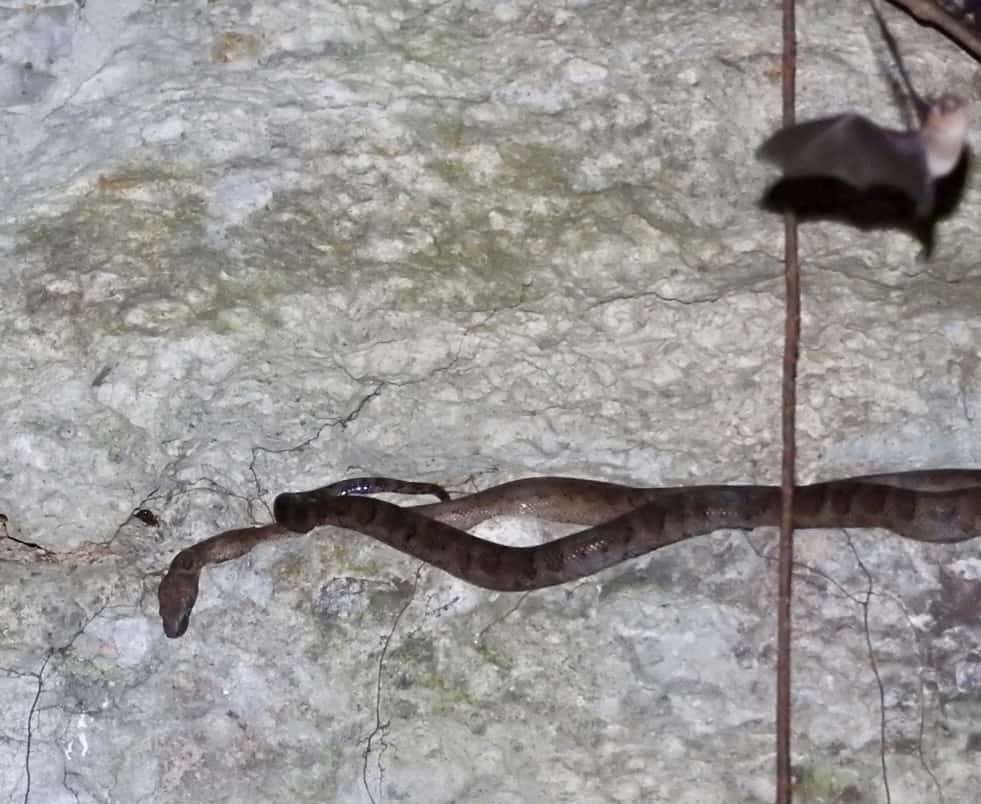
The Cuban boa is the most heavily bat-eating of all boas. Its Jamaican boa relative is much clumsier at hunting bats, but the Puerto Rican boa seems to be the second most skilled.
Like Cuban boas, they dangle from stalactites at the roofs of caves, sometimes near the entrance for visibility, but occasionally as deep as 60 metres into the chamber. Puerto Rican boas have superb flexibility, dangling down in vertical or diagonal shapes, or even a coiled formation with their upper body brought into S-loops, while their tail remains fastened.
Then they open wide and wait patiently, until an overenthusiastic bat crashes into their snout. The boa activates and grabs the bat with its jaws, befor instantly applying two coils, and swallowing either head first or tail first, not being fussy. This is extremely basic hunting, with barely any effort required after dangling down. At the entrance, they fasten themselves to overhanging vines, rock fangs, or lurk at the bottom behind bushes.
| 4 | The ultimate bat predator |
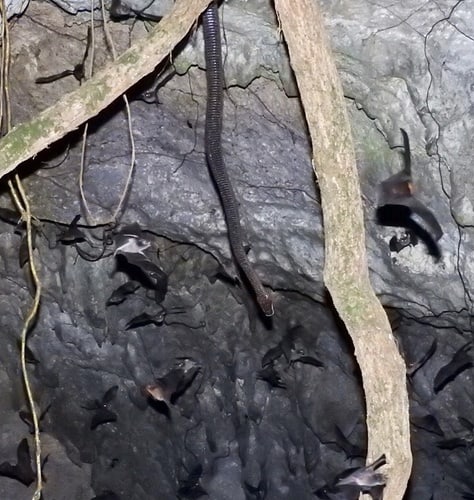
One colony is found in Cueva de los Culebrones, in the municipality of Arecibo. While recording boas here, 300,000 bats were once spotted leaving in just 3 hours, most being the buffy flower bat. The Puerto Rican boas were recorded capturing this species 17 times, and the Antillean fruit-eating bat twice. Both are recorded prey of the Cuban boa as well.
Puerto Rican boas time their hunting to match the bat exodus. Those at Cueva de los Culebrones began hunting 30-40 minutes after the bat colony first activated, but a few sharper snakes positioned themselves outside the entrance the moment the sun set, just a few minutes before the bat stream started. 4 boas were also observed eating dead bats, one being particularly stiff and dried out.
Their hunting methods are extremely similar to the Cuban boa, even though the two diverged an estimated 15.5 million years ago – evidently the system was so infallible that it couldn’t be improved.
| 5 | A sneaky food pirate |
However, the Puerto Rican boa is far from a noble, majestic creature of the wilds. They can get down and dirty too, engaging in sneaky attempts to steal rivals’ prey. One Puerto Rican boa was observed tugging relentlessly on a bat lodged in the jaws of another Puerto Rican boa, the one which had rightfully hunted it. Eventually, a third boa entered the fray, and the three tugged on the bat for 95 minutes, attempting to wrap their lower bodies around each other. Occasionally, one boa would rest and pant in the corner, before reassuming the tug of war. Eventually, the 3 snakes slowed down, losing energy, and gave up the struggle.
The funny thing was that while they waged this pointless battle, 4 boas nearby in the cave managed to catch their own buffy flower bats, with no worries. Maybe it became about proving a point, or perhaps Puerto Rican boas aren’t too bright. There was some code of conduct, as the tugging snakes never tried to hurt each other.
Another thief spent 6 minutes trying to seize a bat from its rightful owner, but failed miserably, as the snake had already stashed the bat within 2 looped coils. Puerto Rican boas have evolved a shield against this theft: while swallowing a bat, they sometimes submerge their head into their own nest of coils, and vanish for 5 minutes. See this video for a Puerto Rican boa feeding on a bat.
| 6 | A gravity resistant boa |
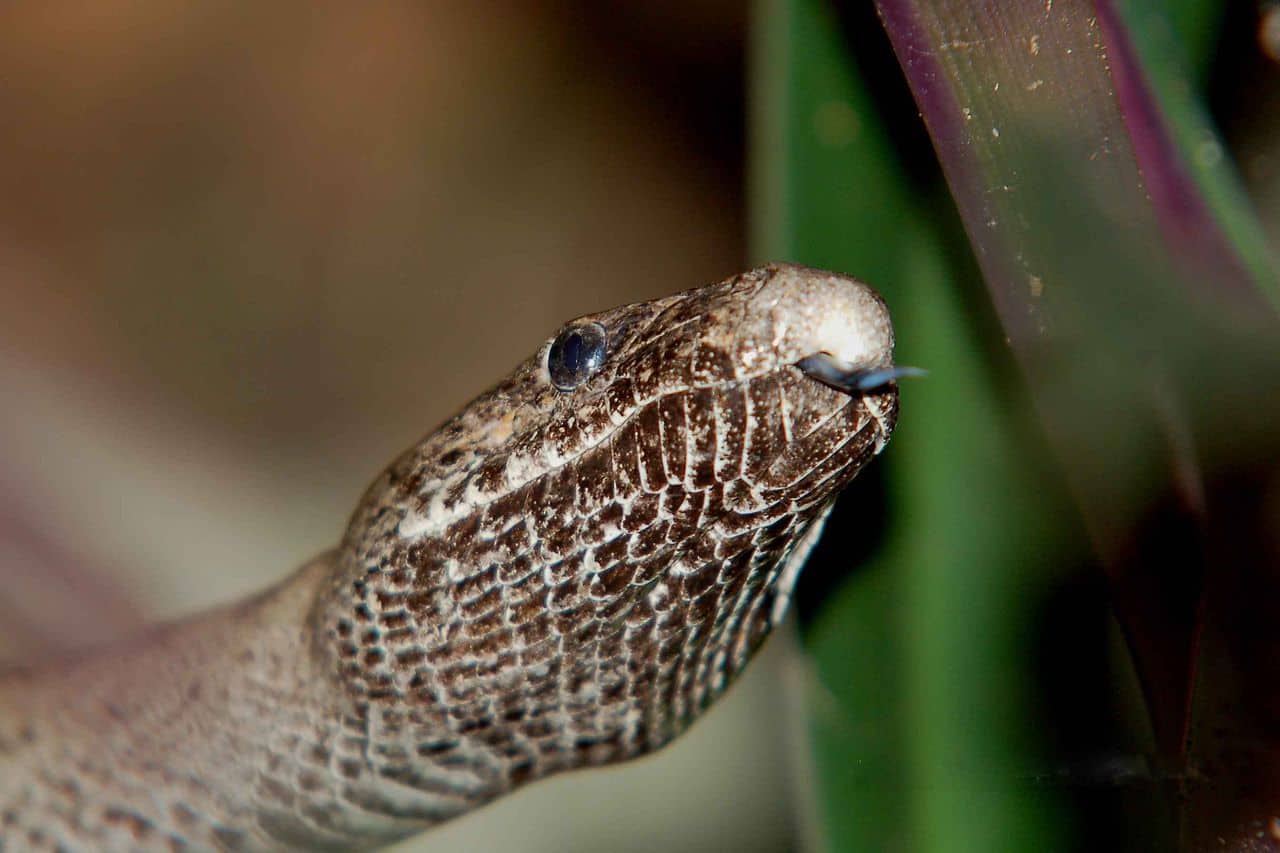
Puerto Rican boas are faithful to specific caves, sticking to the entrance and stalactite formations they’re already familiar with. In 1994-95, scientists spotted the same boa at Cueva de los Culebrones 3 times over a week, identified by a scar.
It’s even theorised that Puerto Rican boas have an adapted cardiovascular system. Gravity is a force that no living creature can deny, and dangling Puerto Rican boas frequently rearrange themselves, to stop the horrific disruption of blood flow (which could burst their brains). However, they’re still able to dangle vertically for over an hour, while a vertical human could easily suffer brain damage after 5-10 minutes.
In one study, scientists were wondering whether the Puerto Rican boas in caves had genetic differences, perhaps a subspecies with bat-exploiting skills. This turned out to be false. There was much larger DNA diversity within each cave (surprisingly little inbreeding), than there was between caves and nearby forests. Bat-hunting is an inherent skill for Puerto Rican boas.
| 7 | Also addicted to black rats |
Puerto Rican boas lean strongly towards mammals for their calories. In captivity, they eat mice and rats happily, with no persuasion or trickery needed. As youths, they start off with anoles, but a handful will eat mice from day one.
A 2003 study analysed 43 Puerto Rican boas from the wild. 8 had been killed by fearful humans, 23 were alive, and 18 were dead on the road, squished by tyres. Not only were mammals the majority of prey, but the majority were one species: the black rat (61.3%). The only other species recorded more than once was Evermann’s anole, an emerald-coloured Puerto Rican native. A mouse, crab and chicken were also dragged from a stomach each.
Their love of mammals simplifies things in captivity, as buying bulk snake food for them is simple, but their temperament is trickier. Puerto Rican boas are fairly aggressive, and may never calm down if purchased as adults. Worse, they have an extremely long strike distance. The angrier snakes will only tolerate their owner’s presence for very short periods. As you open the container to change their water bowl, or drop a mouse meal, it can be a ticking time bomb as to when the glaring snake makes a random vicious lunge.
| 8 | Bouncing back in numbers |
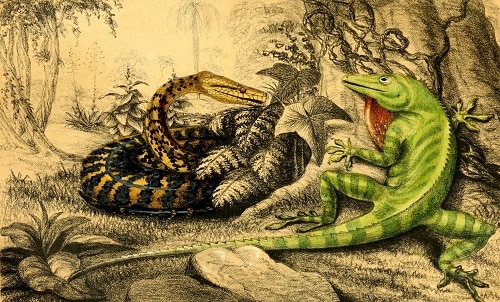
It’s a mixed picture for the Puerto Rican boa. They had been endangered under the US Endangered Species Act since 1970, but in 2022, this was finally relaxed, downgraded from Appendix I protection to Appendix II, which means threatened though not necessarily at risk of extinction. One reason was that Puerto Rico’s forest cover had recovered, growing from 6% in the 1940s to 50% in 2010. Several studies found that Puerto Rican boas were more common than previously believed.
More negatively, a 2021 analysis found that if the urbanisation rates of the previous rate continued, the Puerto Rican boa would be at a 60% risk of declining. However, Puerto Rican boas are excellent at recolonising areas once they’ve been restored to natural land (unlike the Ohio Kirtland’s snake).
For example, a 2005 study followed a grassy area near Sabana Seca, which was regularly mowed but then abandoned. Conservationists saw an opportunity, and gained permission to reforest the land, adding 22 species of trees and shrubs. They then monitored the local wildlife. Over the next 4 years, the number of reptiles per hectare soared from 17 to 1339, including the boa. This is partly because they move decent distances per day.
| 9 | The grand bird alliance |
Like with the Jamaican boa, the birds of Puerto Rico recognise their boa neighbour as a mortal threat to their survival. Scientists have made many observations of birds “mobbing” the boa, squawking, flapping and even ramming in an attempt to persuade them to get lost. In December 1998, scientists saw a pair of strip-headed tanagers squawking incessantly at a boa just 1 metre away.
Soon they were joined by some cousins, 5 Puerto Rican tanagers. Three bananaquits then arrived, followed by a blue-throated blue warbler and a northern parula. One by one the birds troops arrived, so that before long, an entire grand alliance was bearing down on the confused boa. The tanagers flapped at the boa, reaching 30cm away, while the other birds were more cautious, sticking to 50cm away. Eventually, the Puerto Rican boa got the message. It retreated from the branch, slithered down the trunk, and hid under leaf litter.
When frightened, young Puerto Rican boas will curl up into a ball, shielding their brains. Young ones also look strange when grabbing food. They tend to lunge forward with their mouths open, then swing their head from side to side until they make contact with the meal. See this video for a bird-boa battle.
| 10 | Prefers thicker, taller trees |
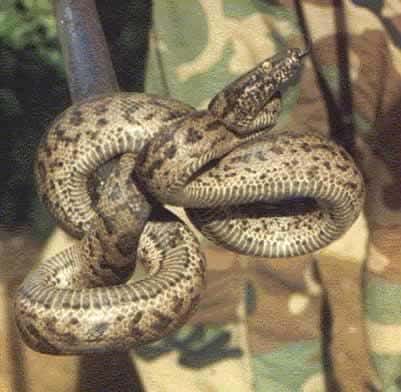
Though attracted to caves, Puerto Rican boas mostly live in forests, particularly those with a thick understory. Like the Jamaican boa, they prefer tree trunks with a larger diameter, those with vines dangling down, the tallest trees, and those with overlapping canopies that they can easily cross between.
The study found that boa trees averaged at 16.1 metres high, versus 13.3 metres for the trees selected randomly. Likewise, the boa trees’ diameter at breast height (DBH) averaged at 52.7cm, versus 23.9cm for normal trees.
A 2004 study tracked 18 Puerto Rican boas for a whole year, in a semi-disturbed forest, and found an average daily movement of 12.9 metres. Males and females moved roughly the same as each other. However, they spent large portions of the day lying motionless, in ambush. Males mostly moved from April to June, and spent more time in trees than females. The Puerto Rican boa has never killed a human being on record.
